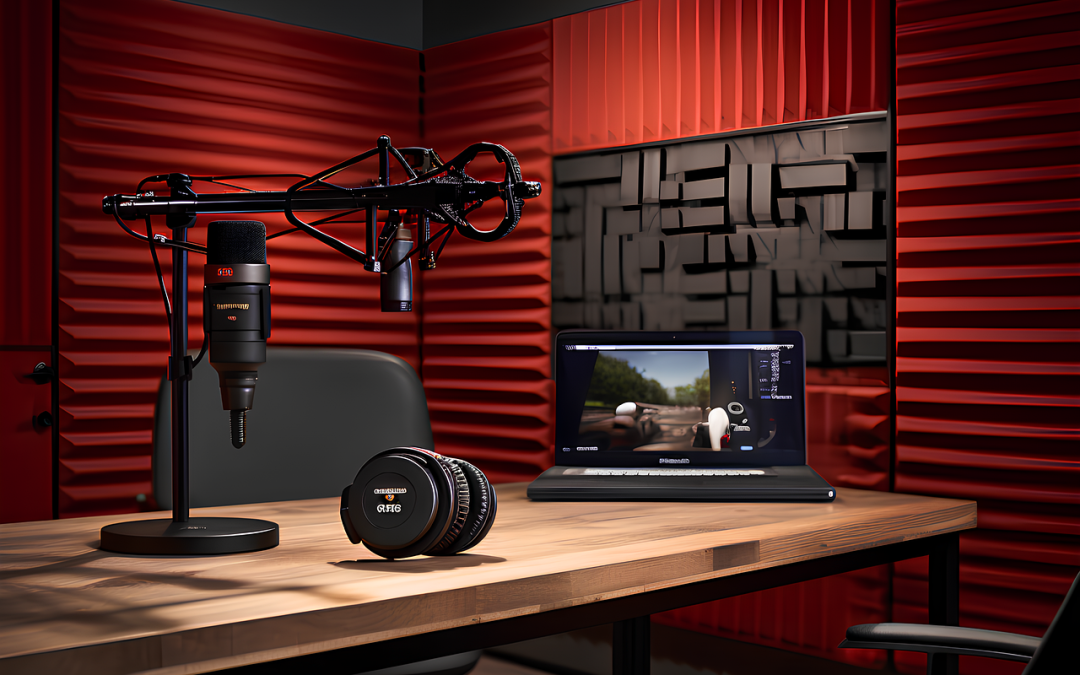Everyone has a podcast these days, which is a great thing. But how do you make yours stand out? If there is so much noise (well, it is all that talking) how do you make sure you can be heard above it?
Here at Move, we think that making sure your podcast is professionally recorded, produced and promoted gives you a competitive edge. You can have all the original quirky ideas (and you should!), but if you are recording a podcast that sounds like you are in an echoey basement with a cover image that looks like it was made from 90s clip art, you won’t be the one that stands out.
Podcasts are a popular form of content now, there is no denying that, but there is still plenty of opportunity to do something different and use this type of content in a refreshing way to get across your message and story. One way to do that is to make sure it is also showing off you and your brand as the leader of the pack from the outset with professional production standards.
We’ve put together the questions we get asked most frequently about ensuring that your podcast looks the part and comes across as the next big thing so you know what you need to succeed.
What are the different podcast formats and which one should I choose?
There are various podcast formats to choose from. You could go with an interview style, storytelling directly from one voice, question and answer, listener content, roundtable discussion or a mixture of all of these.
There isn’t a right or wrong answer here, it is more about looking at what you are trying to say and who you are trying to reach. What would suit your story / theme best and bring that alive in your podcast? Consider your strengths and the type of content that best delivers your message.
How do I edit my podcast episodes?
To edit your podcast episodes, you’ll need audio editing software of which there are many options to choose from.
Whilst it can seem like an uphill struggle small things like removing background noise, small mistakes, or long pauses can really help the overall flow of your podcast. Some software can now suggest what to edit out using AI to search through the audio of your podcast and you can then review and accept these changes rather than have to find each section yourself.
You can also enhance audio quality by adjusting levels, and adding music or sound effects. Remember to edit for clarity, flow, and engaging content while maintaining a natural conversation, it is better to keep in the occasional pause than make the whole thing sound very edited together.
If you decide to have different sections in your podcast, how will you transition between these? A short piece of music, a fade, a quick intro? Having different sections to a podcast can be a great way to mix it up, but make sure it also sounds like it makes sense to be moving from one thing to the next.
What should I do to ensure good audio quality for my podcast?
To ensure good audio quality the one piece of kit that we often recommend to clients to invest in is a quality microphone. Some come with a pop filter, which is also useful.
You will want a quiet recording space. That sounds like a given, but you’d be surprised how many people don’t manage it! Minimize background noise and echoes, and test your audio set up, listen back to it, before your record in full. Spending a few minutes talking about nothing in particular (even to yourself, if you don’t want to bother your guests with this) and listening back to the recording can show you straight away if you are going to have any issues.
You don’t have to be in a room that has specialist sound features (like a studio), if there is an echo it can be as simple as putting a towel on the empty table in front of you to dampen the echo slightly.
How can I create eye-catching podcast cover art?
Your podcast cover art is representing you and your brand across podcast platforms. It’s a chance to be eye-catching, to get listeners curious, before they even press play. Cover art should reflect your show’s theme and attract potential listeners.
Use visuals, legible typography, and colors that align with your content. Think about how the podcast is going to feed in to your overall brand look and feel. Is this something that aligns fully with what you do, do you want it to be instantly recognisable as your content? Or are you looking to go in a different direction? Would something more ‘out there’ than your usual brand with a discreet logo work better?
Include the podcast title, your name/logo, and a hint of the show’s essence.
You can also create cover art for each episode, so you might want to think about a design that shows off your podcast overall but has space to develop – could it include a headshot of your guest each week? Space for something to represent each theme? This is optional, you can just have the same cover art for the whole series, but this is also another option to consider.
What are the best ways to promote my podcast and grow my audience?
We recently wrote a whole blog on this very subject, so make sure to check that out as well!
You will want to promote your podcast by sharing episodes on social media platforms, engaging with your audience, collaborating with other podcasters, and leveraging guests’ networks.
Consistency in release schedule and engaging content is key here. It is a good idea to think in advance about how often you want to release. You don’t have to have a full series recorded before you start releasing, you might want to, but having a few episodes in the bag and feeling secure about the schedule to get the others recorded and released on time is a must.
Another option is to consider guest appearances on other podcasts, so you can take your message on the (audio) road! Find other podcasts in your niche and contact them, you can send them a link to your podcast, a short bio, and some details of what you can bring to an episode for them to look over.
Should I have a podcast intro and outro?
Having a podcast intro and outro adds professionalism and familiarity to your show.
Create a concise and engaging intro that introduces your show and sets the tone. It needs to be short and snappy but let people know why you’re here, what you have to offer and what your episode is going to cover. It can be super simple, remember the one for fan favourite Serial? ‘One story, told week by week’ It tells you everything you need to know right there, you are listening to this engaging story that will unfold on a weekly basis.
An outro can include a call-to-action, social media links, and a thank-you message. Again, keep it simple but don’t miss out on the chance to tell people where they can find you, how to work with you, or what you want them to do next.
Do I need to transcribe my podcast episodes?
Transcribing podcast episodes offers several benefits, top of the list here is accessibility. The Bureau of Internet Accessibilty states ‘Transcripts can be a helpful resource for people with hearing disabilities, people with attention-related cognitive conditions, and people who just don’t want to listen to audio to find information.’
Having a place online that people can go to – usually your website – so they can read through the podcast in full ensures that you are making your podcast available to anyone that wants to access it in this format and invites them to join in your conversation.
Transcripts can also improve search engine rankings, and can be repurposed into blog posts or social media content. Whereas a search engine can’t ‘listen’ to a podcast link on your website, it can, and will, go through text to find keywords and themes and start to rank your website for those.
What’s the importance of consistency in podcasting?
Consistency is crucial in podcasting. Stick to a regular release schedule, whether weekly, bi-weekly, or monthly. This builds trust with your audience, keeps them engaged, and sets expectations. Reliable consistency helps grow your listener base and maintains your podcast’s credibility.
Can I use copyrighted music in my podcast?
Using copyrighted music in your podcast requires proper licensing. Copyright laws apply to podcasting, and using copyrighted music without permission can lead to legal issues.
You can use royalty-free music, tracks under Creative Commons licenses, or consider purchasing the necessary licenses for commercial use of copyrighted music. There are many online services that you can subscribe to which will then let you use any of their library of music in your podcast and it will be under licence for you to do so.
Starting a podcast can seem like a big task, but if you think about how you want to present yourself and take some time to plan and consider things like we’ve covered in this article then you can ensure you are setting things in motion in the right way.
If you’d like to have a chat about how to bring your podcasting ideas to life, then get in touch to talk about our full service podcast production, by your side from ideas through to publication.
This was written by Laura, our podcast production manager here at Move.

